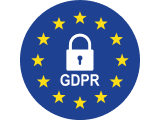Enhanced Productivity With AI Note Taking
Use Transkriptor to automatically record, transcribe, and summarize your meetings into actionable text. Whether you need high-volume hours, centralized billing, team management, or custom solutions, we’ve got it covered.
Let’s Talk
Boost the productivity of your team with Transkriptor Business.
Revolutionize Your Productivity with AI Transcription Technology
Unlock the Power of Advanced AI Transcription for Every Aspect of Your Work. Try it Today - Elevate Productivity, Simplify Workflow!
Instant Transcription
Turn Speech into Accurate Transcripts in Seconds. Professional transcription technology for audio and video content, so you can focus on insights, not note-taking.
Screen Recording Made Simple
Capture Every Moment with Clarity. Record and transcribe your screen with ease for tutorials, presentations, and more - review and search transcribed content whenever you need.
Smart Meeting Assistant
Never Miss a Detail Again. Automated transcription, summaries, and action items from your meetings, transforming conversations into searchable transcripts while enhancing productivity.
Text-to-Speech Magic
Bring Text to Life with Natural Voices. Convert written text to realistic spoken words, enhancing accessibility and engagement.
AI-Powered Content Writing
Effortless Content, Perfectly Written. Transcribe and transform your ideas into high-quality, engaging content tailored to your audience with minimal input.
AI Transcription Knowledge Hub
Your Team's Transcribed Knowledge, Just a Click Away. Centralized AI knowledge base that organizes, retrieves & streamlines transcribed conversations seamlessly.
Enterprise-Grade Security
Security and customer privacy is our priority at every step. We comply with SOC 2 and GDPR standards and ensuring your information is protected at all times.





Frequently Asked Questions
The Business Plan is designed for small to medium-sized businesses and includes 100 hours per month of transcription services. It offers multi-user access with workspaces, multi-user calendar connections, and integration with external tools. Users can organize their meetings and documents, access team collaboration features, and utilize AI-powered insights.
The Enterprise Plan is targeted at large organizations requiring scalability. It includes all the features of the Business Plan, such as 100 hours of transcription services, plus API access, individual documentation, and customized solutions. This plan is tailored for companies needing advanced, scalable solutions, and support.
Transkriptor ensures data safety by complying with industry security standards such as GDPR, ISO 27001, HIPAA, and SOC 2. These standards ensure that personal data and sensitive information are securely managed and protected.
Transkriptor complies with SOC 2, GDPR, ISO 27001, and is actively working towards HIPAA compliance. These standards guarantee that security, privacy, and data integrity are maintained at the highest levels.
Yes, Transkriptor integrates with various external tools such as Google Drive, Outlook, Dropbox, and more. These integrations allow users to automate workflows, sync meetings, and manage files within a unified environment.
You can upgrade your plan by contacting sales or accessing your account on the Transkriptor website, where you can explore different options, such as the Business or Enterprise plan, and choose the best fit for your needs.
Transkriptor supports all audio and video file formats as input (MP3, MP4, WAV, AAC, M4A, WEBM, FLAC, OPUS, AVI, M4V, MPEG, MOV, OGV, MPG, WMV, OGM, OGG, AU, WMA, AIFF, OGA). You can export your transcriptions in Plain Text, TXT, SRT, or Word file formats.
While the specific details aren't mentioned, exceeding monthly minutes likely requires either an upgrade to a higher plan or the purchase of additional transcription hours, depending on your subscription plan.
Yes, Transkriptor offers customized solutions, particularly for Enterprise customers. These solutions include tailored workspaces, API access, individual documentation, and scalable features to meet specific organizational needs.
Your subscription includes access to multiple Tor.app tools, such as Transkriptor, Eskritor (AI Writer), Speaktor (Text to Speech), Meetingtor (Meeting Assistant), and Recorditor (Screen Recorder).